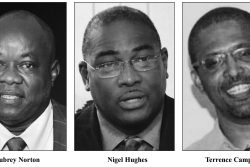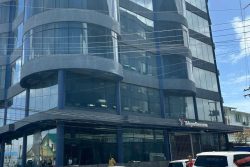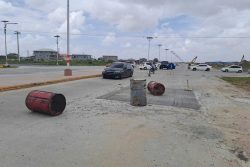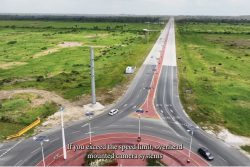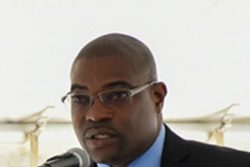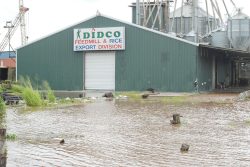Introduction
At long last, the Berbice Bridge Company Inc. (BBCI) has decided to file annual returns and financial statements with the Registrar of Companies. The law requires that such returns and accounts be filed no later than around mid-August of each year for companies with a December 31 year-end. Why BBCI chose to file some years and not others is for speculation but one thing is certain: the return and the financial statements for 2010 make for very interesting reading or indeed for some serious concerns.
On the face of it the company did very well in 2010. Its revenue for 2010 is $1,115 million, up 17% over 2009, the company’s first full year of operations. Total non-interest expenditure was $287 million, up 16 % over the previous year. Included in non-interest expenditure is a depreciation charge of $140 million, a small increase over the preceding year. And that is where the questions begin to arise. But before that important digression, let us continue the brief income statement analysis. Interest expense has risen from $694 million to $715 million, thus accounting for 64% of the company’s revenue. Because of its tax-exempt status the company was able to record a net profit of $137 million compared with $5 million in 2009.
More borrowings
 The Balance sheet shows the company as having $8,865 million of fixed assets compared with $8,965 million in 2009, the entire reduction being attributable to depreciation charge in 2010. The more easily realisable current assets have declined in value from $161 million in 2009 to $24 million in 2010, with cash resources reducing from $152 million in 2009 to $24 million in 2010! Current liabilities which are amounts that are payable at the balance sheet date or within twelve months thereof amounted to $205 million, a significant decrease in such liabilities over 2009 as the company paid out $450 million in subordinated loan stock interest and returned some $130 million in corporate bonds.
The Balance sheet shows the company as having $8,865 million of fixed assets compared with $8,965 million in 2009, the entire reduction being attributable to depreciation charge in 2010. The more easily realisable current assets have declined in value from $161 million in 2009 to $24 million in 2010, with cash resources reducing from $152 million in 2009 to $24 million in 2010! Current liabilities which are amounts that are payable at the balance sheet date or within twelve months thereof amounted to $205 million, a significant decrease in such liabilities over 2009 as the company paid out $450 million in subordinated loan stock interest and returned some $130 million in corporate bonds.
This reduction in short term liabilities came at the expense of increases in long-term loans. The Beharry Group added to their investment in the company some $325 million through the Guyana Bank of Trade and Industry ($250 million) and North American Life and Fire companies ($75 million). Hand-in-Hand Life increased its investment in the Bridge Company by $70 million while its Trust Company reduced its investment by $25 million. Meanwhile the New GPC Inc. a member of a group that has earned some investing notoriety in Guyana took out its entire $35 million in loan stock in the company.
Capital Structure
and concealment
The company has an interesting capital structure. Its share capital is $400 million shared between six shareholders with four of them – NIS, New GPC, CLICO and Secure International Finance Company – having $80 million each, and two – Hand-in-Hand and Demerara Contractors – sharing the remaining $80 million. But then the ubiquitous NICIL has a special $1 share which gives it a veto power over any major decision of the company.
If the financial statements are taken at face value it may seem that that is the extent of NICIL’s investment in the company. A closer look indicates that a single investor has some $950 million in preference shares in the company earning a rate of dividend of 11% per annum or $104.5 million per annum. It is a requirement of the law that the persons holding shares in the company be listed in the Annual Return. This has not been done and to that extent the annual return signed by Mr. Winston Brassington, the CEO of NICIL should have been rejected. But then again, the Registrar was probably thankful that the company filed any return after six years.
The concealment gets worse. Note 10 to the financial statements tells the reader that the dividends paid on the preference shares are cumulative, i.e. if they are not paid in one year they are carried forward to the next period for payment at an increased rate of 12%! Forget for a moment that unhelpful use of language. What is striking is that the company owed the preference shareholder at December 31, 2010 more than $600 million but that shareholder is reported in the 2010 financial statements as waiving “dividend and interest on dividend due up to December 31, 2010”.
It does not take a genius to realise that that investor is NICIL or one of its many satellites through which it can funnel money that should otherwise have passed through the Consoli-dated Fund and voted on by the National Assembly. In fact NICIL’s satellite for the billion dollar investment and which waived the hundreds of millions of dollars was a company called Aroaima Mining Company Inc. which is no longer in operation. Even if there is a real company called Aroaima Mining Company Inc. its controlling parent is NICIL headed by Dr. Ashni Singh among several Cabinet members who are also NICIL’s directors. That such a stellar collection of responsible men could make such as decision and then try to conceal it from the taxpayers is reprehensible.
It would seem as well that under the Financial Management and Accountability Act NICIL has no authority to waive any such sums and that its Board including the Minister of Finance and the Cabinet Secretary are guilty of misfeasance in public office.
Wrong treatment
Then there is the question of the fudging of the depreciation versus amortization. Depre-ciation is the annual charge to write off the cost of a long-term tangible asset over its useful life. Amortization is the systematic allocation of the depreciable amount of an intangible asset over its useful life. I am aware that someone closely connected with the company had been calling around asking whether or not there was a need to charge any depreciation on the Bridge. Clearly fudging was being considered at some level. On being told of the query, I thought it was some junior not familiar with even basic bookkeeping. I should not have been so dismissive.
In fact it is clear to me that the entire treatment of the cost of the Bridge is wrong. The company does not own the Bridge as confirmed by the special share and its own note to the financial statements. Under a Concession Agreement that the law setting up the statutory framework for the Bridge has made so secret, the company has the right to operate the Bridge for a period of twenty-one years. Indeed note 1 to the financial statements described the principal business activities of the company as the construction and operation of a floating bridge. This is the classical Build-Operate-Transfer arrangement and gives the company not ownership of the public asset but a right to operate the Bridge. Such a right is an intangible asset subject to amortization over the period of the right.
Arbitrary and self-serving
I would think that the treatment as a tangible fixed asset is more than simple unfamiliarity with the relevant International Financial Reporting Interpretations Committee (IFRIC) guidance on the matter. So what did the Board featuring Ms. Gita Singh-Knight and Mr. Winston Brassington choose to do? They chose a write-off period of thirty-eight years under the reducing balance basis. If this is converted to the more common straight-line basis the Board is assuming a useful life of the Bridge of more than one hundred years! And to compound the grey areas they estimate that at the end of its so-called estimated useful life the Bridge would have a residual value of more than four billion dollars.
But the absurdity of it all comes from the company’s own financial statements. As the system implies, under the reducing balance method the depreciation charge declines each year so that if there is a $100 investment in an asset with a useful life of 10 years the depreciation in the first year will be $10 ($100/10), the second year would be $9 ([$100-10]/10) etc. The magicians at the Bridge Company claim to be using the reducing balance but end with straight-line depreciation charges!
Responsibility
Just who are responsible for the type of fudging that is taking place with the Annual Report’s omission, the mistaken application of tangible versus intangible asset and the fiddling of depreciation? To start with the Board is headed by Ms. Gita Singh-Knight of CLICO infamy. Ms. Singh-Knight was the CEO responsible for shipping billions of dollars of NIS and other funds for her boss Duprey who then squandered it abroad. Ms. Singh-Knight is an accountant by training and indeed is the only professional accountant on board.
Other members of the Board include Hand-in-Hand executive Keith Evelyn, Beharry Group executive Paul Cheong, engineer Edward Carter, Attorney-at-law Paul Fredericks former jurist Cecil Kennard. The annual return should state the business occupation and particulars of other directorship. None is stated. The only other person with any claim to some amount of accounting knowledge is Mr. Winston Brassington whose role in prevailing upon entities like the National Insurance Scheme and the New Building Society for investments in the Bridge has been addressed before in this Page.
The political dimension
While the Government stoutly resists claims that its decision to bypass and in the process practically kill New Amsterdam as a commercial centre in favour of the Corentyne Coast, it was forced to have a skewed consultant report to justify its decision. But economics has a way of trumping race and politics. Having sited the bridge at D’Edward Village instead of Everton it must now contrive all forms of financial and other shenanigans to make the Bridge seem viable. Competition has been frustrated if not ruled out while the company, its investors, sub-contractors and everyone else connected with it enjoy a range of tax concessions that would make even the Ramroop Group green with envy.
Conclusion
Had it not been for some admirable creative financing and accounting the Berbice Bridge Company would not only have recorded continuing and significant losses but it would have been unable to meet the generous interest and dividend obligations to its investors. The public needs to be reminded that the President Jagdeo–Singh-Knight combination has placed a six billion dollars hole in the balance sheet of the NIS. And as a result of the Brassington– Luncheon work on the NIS, the Scheme had at December 31 2010 over $1.5B invested in the Berbice Bridge. Let us hope that the group combination will not cause the company to sink.
